Space
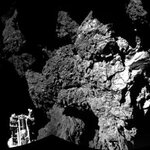
This one is definitely too juicy to ignore - I need to join the crowd of bystanders-in-awe. As you may have heard, ESA's ROSETTA spacecraft successfully landed yesterday on the solid nucleus of comet 67/P, Churyumov-Gerasimenko - a 2.5 mile long conglomerate of rock and ice. I refrain from giving detail of that enormous achievement for humankind, because I rather want to comment on this rather funny twist of the whole story. But still let's first enjoy at least one nice picture of the surface of that distant solar system body...
So, about the "incident". Perhaps it was planned ?…
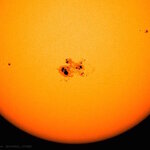
10 Earths could be laid across the diameter of the gigantic sunspot in AR2191 during its previous rotation, captured on October 23, 2014. NASA’s Solar Dynamic Observatory
By Paul Cally, Monash University
The largest sunspot seen in 24 years is rotating back to face the Earth, and it looks to have grown even bigger.
Last month, the solar active region known as
AR2192
(also known as AR12192) entertained the world with the sunspot clearly visible with the naked eye (with some appropriate and approved solar-watch or eclipse dark glasses, of course), and produced a series of large flares.
But…
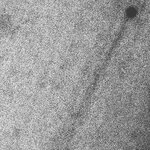
A new active asteroid called 62412 has been located in the Solar System's main asteroid belt between Mars and Jupiter. It is the first comet-like object seen in the Hygiea family of asteroids.
Active asteroids have stable orbits between Mars and Jupiter like other asteroids, but they sometimes have the appearance of comets, when dust or gas is ejected from their surfaces to create a sporadic tail effect. 62412 is only the 13th known active asteroid in the main asteroid belt.
Carnegie's Scott Sheppard and Chadwick Trujillo of the Gemini Observatory discovered an unexpected…
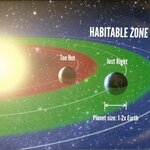
Think of our poor sister world Venus – almost the same size as Earth, it probably had oceans at the beginning. But Venus orbits closer to the sun -- and was never in the Continuously Habitable Goldilocks Zone, or CHZ.
Instead our poor sister world quickly spiraled into a greenhouse effect that erased its oceans and drove all the water away, leaving a desert planet, coated with dense clouds of sulfuric acid and carbon dioxide.
That kind of death spiral is what will happen to our Earth – either if we fill the atmosphere with greenhouse gases, or if we just wait one or two hundred million…
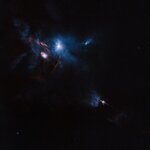
The XZ Tauri star system has been imaged blowing a hot bubble of gas into the surrounding space, which is filled with bright and beautiful clumps that are emitting strong winds and jets. These objects illuminate the region, creating a truly dramatic scene.
This dark and ominous landscape is located some 450 light-years away in the constellation of Taurus The Bull. It lies in the north-eastern part of a large, dark cloud known as LDN 1551, as seen in the Hubble telescope image below..
Just to the left of center in this image, embedded within a rust-coloured cloud, lies XZ Tauri. While it…
Just... WOW. I did not expect this to happen in my lifetime (and no, I do not expect to die tomorrow either). The Atacama Large Millimeter Array in Chile has pictured a forming planetary system in a young star surrounded by a complex nebula of hot gas.I still remember the Scientific American article I read some 25 years ago about planet formation simulations, which showed how computer models of planetesimals rotating in a cloud of gas around a star. The planetesimals would pick up matter around as they swept the orbital plane, and in the matter of millions of years acquire a planetary mass…
NASA's Dawn spacecraft visited the asteroid Vesta in 2011 and it showed that deep grooves circling the asteroid's equator were probably caused by a massive impact on Vesta's south pole.
A super high-speed cannon at NASA's Ames Research Center has shed new light on the violent chain of events deep in Vesta's interior that formed those surface grooves, some of which are wider than the Grand Canyon.
"Vesta got hammered," said Peter Schultz, professor of earth, environmental, and planetary sciences at Brown and the paper's senior author. "The whole interior was reverberating, and what we see on…
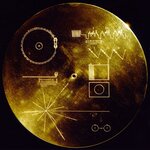
Elon Musk says he wants to create a backup of Earth on Mars, and several brilliant people have suggested this should be one of our main objectives for sending humans into space, not only Elon Musk. Perhaps most notably, Stephen Hawking. But being brilliant doesn't mean you are always right in everything you say, or that what you say can't be questioned by anyone else!
There are other good reasons for space settlements - but would any of them be of any value as a "backup" any time in the next few hundred million years?
SHORT ANSWER
First, there is no known hazard that is at all likely…
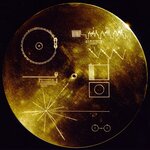
Elon Musk says he wants to create a backup in space, and Stephen Hawkins also says that humans have to move into space to survive. For some reason, hardly anyone seems to question this. I can see many good reasons to have space settlements, and eventually indeed Earth will become uninhabitable but can't see any value of them as a "backup" any time in the next few hundred million years.
So, first of all - it's important that you can access your backup when you need it. If someone offered to write important files to a DVD and send it to the Moon - or even to interstellar space - what is…
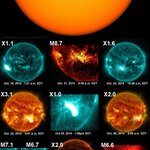
An active region on the sun labeled AR 12192 rotated into view on Oct. 18th. It was already an area of intense and complex magnetic fields and soon grew into the largest such region in 24 years.
It fired off 10 sizable solar flares as it traversed across the face of the sun and became so large it could be seen without a telescope (don't ever look without with eclipse glasses) as many did during a partial eclipse on Oct. 23rd.
Such active regions are measured in millionths of a solar hemisphere, where 1 micro-hemisphere, or MH, is about 600,000 square miles. This region topped out at 2,750 MH…